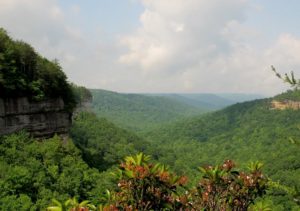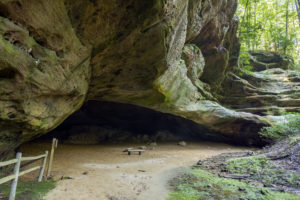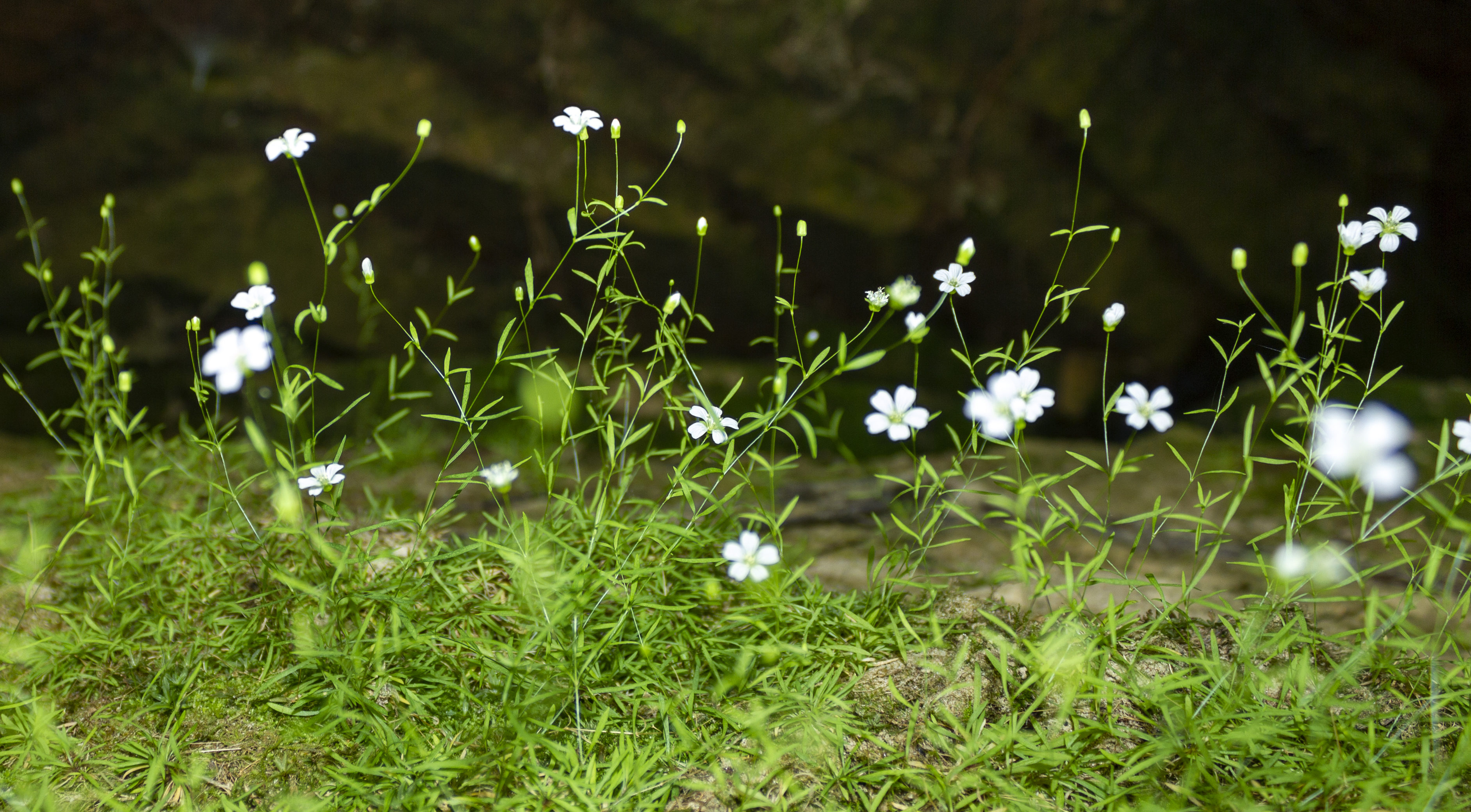Conservation easements serve numerous meaningful purposes. The tool ensures conservation values of properties remain protected in perpetuity, allow a landowner to continue to own and manage their land, and protect clean water and air for future generations. Additionally, conservation easements ensure the protection of critical habitat for threatened and endangered species forever. For species like the Cumberland sandwort, a TennGreen-held conservation easement provided a protected habitat for the species to thrive, aiding in its delisting.
CUMBERLAND SANDWORT
First described as a species in 1979, the Cumberland sandwort (Minuartia cumberlandensis) occurs in rockhouse and bluff sites composed of sandstone rock. Primarily found in the Big South Fork watershed of Kentucky and Tennessee, Cumberland sandwort was listed as an endangered species in 1988. At that time, only 28 occurrences of the plant were documented in southern Kentucky and northern Tennessee. Cumberland sandwort was under threat from being trampled by recreational hikers, disturbed by collectors illegally digging for Native American artifacts, and habitat encroachment from timber removal near the locations of the species.
RECOVERY EFFORTS
To save the species from being lost, the recovery plan required “at least 40 geographically distinct occurrences” to be protected before the species could be removed from the endangered list. Throughout an almost twenty-year monitoring program, the Tennessee Department of Environment and  Conservation (TDEC) and partners documented stable populations on public lands, including Pogue Creek Canyon State Natural Area (pictured left) and Pickett State Park and Forest.
Conservation (TDEC) and partners documented stable populations on public lands, including Pogue Creek Canyon State Natural Area (pictured left) and Pickett State Park and Forest.
In 2018, the U.S. Fish and Wildlife Service (“the Service”) and TDEC reached out to TennGreen staff to visit two conservation easements held by TennGreen near Big South Fork. TDEC and the Service staff hoped to document additional populations on the conservation easements to provide further habitat protections needed to recover the species. One conservation easement, in particular, appeared to have habitat that supported the species. The landowner, the late Dr. Lianne Russell, approved the state and federal partners to search the property for Cumberland sandwort. After visiting the property, they documented a stable population of the species. Through this identification and additional populations in the region, the Service sought to remove the species from the federal endangered species list.
DELISTING
In 2021, the Service removed Cumberland sandwort from the endangered species list, and TDEC hosted a delisting celebration in April 2022. Although the species is no longer considered  endangered, TDEC, the Office of Kentucky Nature Preserves, National Park Service, and the Service will complete cooperative post-delisting monitoring. If you want to see Cumberland sandwort in its native habitat, you can visit Hazard Cave within Pickett State Park (pictured).
endangered, TDEC, the Office of Kentucky Nature Preserves, National Park Service, and the Service will complete cooperative post-delisting monitoring. If you want to see Cumberland sandwort in its native habitat, you can visit Hazard Cave within Pickett State Park (pictured).
Interested in learning more about protecting your land with a conservation easement? Learn more here.

